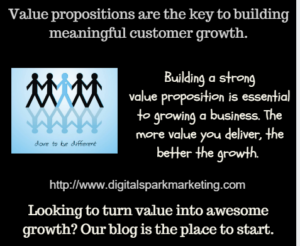Employees that feel insignificant rarely make a significant contribution. Does your business pay attention to ways to improve your employee and team engagement? Like making employees feel they are making a significant contribution?

Check out our thoughts on team leverage.
More than 100 studies have now found that the most engaged employees — those who report they’re fully invested in their jobs and committed to their employers — are significantly more productive, drive higher customer satisfaction and outperform those who are less engaged.
Related: 10 Ways Personal Development Can Improve Long-Term Success
A Towers Watson global workforce study found that only 20% of employees are truly engaged in their work — heart, and soul. As a student of management for over 40 years, I’m depressed by the fact that so many people find work depressing.
Wow, that is a number that will impact a business in lots of ways, yes?
Engaged employees who are satisfied with their jobs and feel that they’re making a contribution to their organizations and helping customers are more likely to work hard for their company’s success.
It is therefore imperative for organizations to make sure that they achieve and retain high levels of employee engagement.
It’s a disconnect that serves no one well. So what’s the solution? Where is the win-win for employers and employees?
The answer is that great employers must shift the focus from trying to get more out of people, to investing more in them by addressing their needs and bringing the best of themselves to work every day.
We have all heard the importance of developing engaged employees at our workplace, but too often the articles are full of theoretical discussion instead of practical steps to make it happen.
Here are some simple steps to consider when starting your program.
Survey your employees
Establish a benchmark by conducting an employee survey that measures what matters to your employees. When conducting an employee engagement survey, commit to acting on the results or don’t bother spending the time and money conducting the survey.
Survey as part of the planning and six months after launching the program to gauge the success of your initial planning and execution. External vendors can be used to ensure an objective survey is developed that won’t have unintended skewed results.
Build a business case
Build the business case to show the financial benefits. Studies show that companies with strong employee engagement programs had improved financial performance, reduced attrition, and higher employee satisfaction.
Each organization has different engagement drivers, and every organization needs to build its business case.
Offer the latest tools
Hiring similarly motivated teammates is extremely important.
Nothing is more demoralizing than being surrounded by mediocre people. It tells a worker that their employer doesn’t understand or value the work they’re doing.
Offering the best tools is crucial as well. “If you’re forced to work with pick axes and shovels (Java, .NET), you quickly become disillusioned when the other team is operating jackhammers and trucks (Ruby, Python).”

Team engagement … make it personal
Ask people how they perform when they are not engaged versus when they are engaged and consider the implications for the organization.
Then dig deeper to determine what contributes to that engagement.
Create a vision
Create a mutual vision of what an engaged culture can look like. Ultimately, you want the attitudes of your employees to generate behaviors that contribute to desired business results.
It is key to acknowledge that each department or function may have different engagement drivers, so build in flexibility.
Team engagement … don’t micromanage
We advise managers to only plan for a few weeks in advance. Trying to design a big system upfront is a fool’s game that requires employees to be fortune tellers… and forcing them to be is going to make their discontent.
Don’t micro-manage or check in too frequently.
Build strategic framework
Building from your vision, create a document that is easy to understand and that aligns the organization’s vision, values, and aligns desired behaviors with results.
An example
Hilton Garden Inn operates on the premise that happy employees lead to happy guests. The company has invested heavily in training to give employees a sense of engagement with the brand. Alan Roberts, vice president for brand performance, notes that this is especially important for the vast majority of people working at the 544 Hilton Garden Inns around the world are employees of the various franchisees.
“We need to push engagement through different initiatives to make them feel part of the organization, even though they don’t receive their paycheck from us,” Roberts says. role-play across the different properties. “We want to keep employees happy and on the same track,” Roberts says.
Team environment
Create a strong team environment. Strong employee engagement is dependent on how well employees get along, interact with each other and participate in a team environment
Recognize desired behaviors
Build your recognition programs around desired results — both behaviors and business results. Focus on letting employees devote themselves to their strengths.
A second example
Hampton Hotels is a firm believer in the philosophy of ensuring that the 50,000-odd team members who work at Hampton Hotels properties use their strengths.
“When people are passionate, they can deliver a memorable experience to guests,” says Gina Valenti, vice president of owner services at Hilton Worldwide.
In a bid to help its people do their job better and create connections, Hampton Hotels developed a Website to share content like videos and best practices and also allow individuals to seek support from their peers or share success stories.
Communicate, communicate, and communicate

This cannot be over-emphasized. Make sure that communication is consistent and ongoing. Rarely do you over-communicate.
Part of the process
Employees need to feel like they are part of the process, that their thoughts and ideas matter and that they have a voice in how their work is performed
Measure what counts
Metrics are essential for understanding adoption. Engagement metrics must first be aligned with the organizational goals and then embedded into senior leader performance plans.
Build a balanced scorecard that measures business results AND desired behaviors. Incorporate the results into your business planning process and performance plans.
Make managers a priority
If the managers do not buy in, the program is doomed to failure. Spend extra time ensuring they understand and endorse the program.
Leaders need to see that engaged employees can directly tie to their business results and make a difference for them: attrition, productivity, customer satisfaction, etc.
Build engagement into their performance reviews.
Focus on leadership to improve team engagement
Here is where we recommend you put the focus:
The longer term, not short term
The best teams have a longer-term focus based on their vision of their company’s desired future. They link the company’s focus to this desired future. They share their vision actively and discuss it openly with the organization. They do not lose energy in focusing on short-term temporary improvements; they focus on creating sustainable results.
Personal Alignment
The best teams know their own qualities and weak points very well, as well as what they stand for. They act based on clear personal values and include these in their vision. Because of their high level of personal alignment, they explore different opinions with an open mind and feel no need to focus on themselves.
Their focus is always on creating the best company results, in line with these key values. Read more about Personal Alignment here.
Focus arouses eagerness
Teams pay special attention to the process of building a shared focus throughout the organization. For them focus is not just setting out tasks and actions. It is about creating shared energy that drives us towards a common end result.
They invite people to take part in defining the focus that is needed to create the desired future, and this builds motivation and commitment.
Releasing smart energy
Great teams are only interested in decisions and actions that will bring us closer to our destination. Even more, they are continuously challenging people to focus on the levers for change that will boost us forward, and not focus on trivial things.
They are allergic to ‘jumping to conclusions without knowing how it will bring us closer to our goal. But they are also allergic to procrastination and risk aversion when the way forward is to ‘experiment – learn – adjust’.
They are persistent in their focus
These leaders stick to the focus, even if results are not forthcoming at first sight. They show confidence and stay focused. This does not mean they will never change course, and will always rigidly keep following the initial plan.
When they see that the vision will not be reached by maintaining the current focus, they are the first to shift focus. But as long as the focus is directing us towards the vision, they will keep this focus.
The bottom line
To be effective in this new era, we as managers need to see our jobs differently. No more just focusing on metrics like clicks, video views, or social media shares.
We must successfully integrate our function with other business functions to create entire brand experiences that serve the customer all the way through their experiences throughout the business.
We can do better. Much better. But first, we need to stop seeing ourselves as crafters of clever brand messages and become creators of positive brand experiences.
There can never be enough focus on continuous improvement on employee engagement, independent of how well the business is doing.
It seems we all are looking to take our success to a new level. This is an excellent time to make a statement with their employee engagement. Changing before you have to is always a good idea.
Once business leaders recognize that employee engagement is directly related to an optimal customer experience and will have an impact on their bottom line, they are more willing to invest in it.
But they should be careful not to spend all their allocated dollars on one-time initiatives but focus more on their employees, making each feel valued.
At the end of the day, how you treat people is what they’ll remember. Employee’ engagement is built each day.

Need some help in capturing more improvements for your staff’s leadership, teamwork, and collaboration? Creative ideas in running or facilitating a team or leadership workshop?
All you get is what you bring to the fight. And that fight gets better every day you learn and apply new ideas.
When things are not what you want them to be, what’s most important is your next step.
Test. Learn. Improve. Repeat.
Are you devoting enough energy to innovating your social media strategy?
Do you have a lesson about making your advertising better you can share with this community? Have any questions or comments to add in the section below?
Digital Spark Marketing will stretch your thinking and your ability to adapt to change. We also provide some fun and inspiration along the way.
More leadership material from Digital Spark Marketing’s Library:
Build an Effective Team by Being a Talent Hound
Success Enablers of Highly Creative Leaders
Secrets to Becoming a Remarkably Mindful Leader
Leadership Characteristics That Improve Influence |